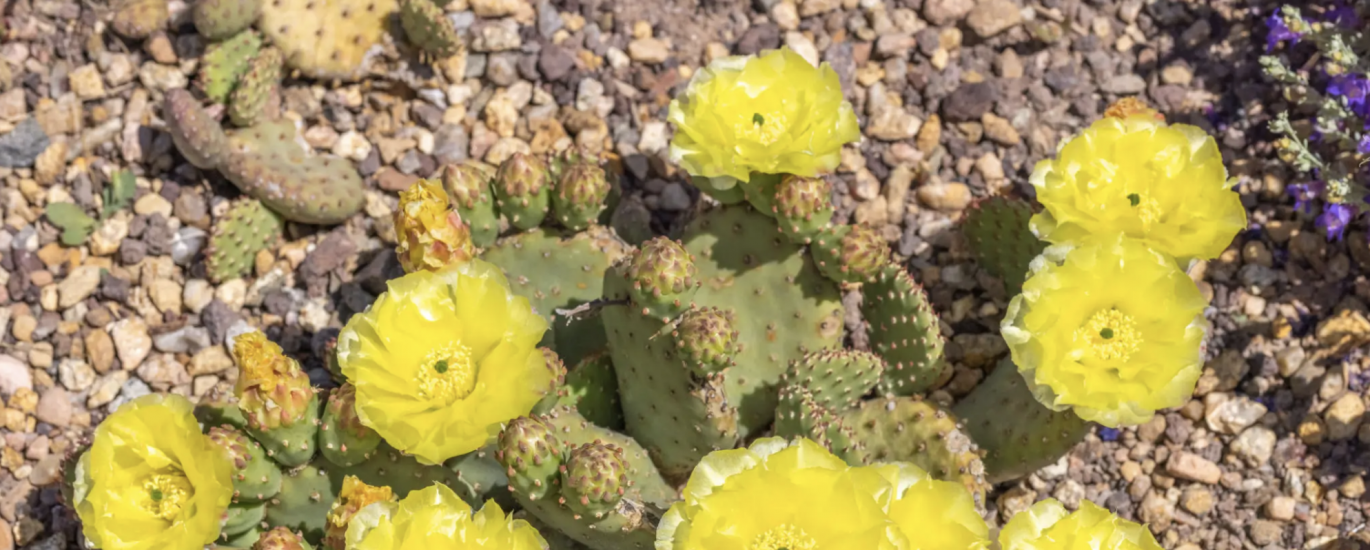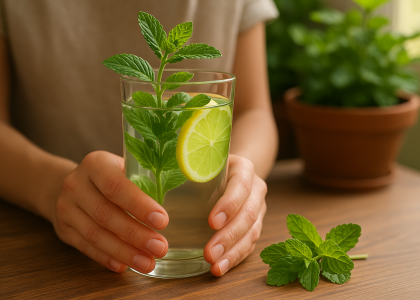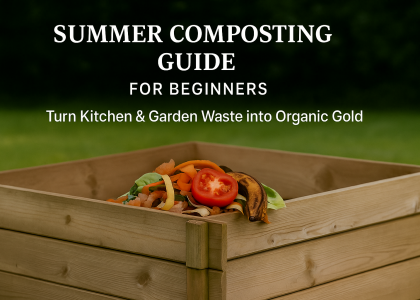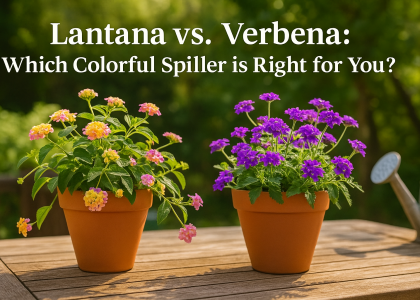Botanical Name: Opuntia spp.
Common Names: Prickly pear cactus, nopal, paddle cactus
Plant Family: Cactaceae
Native Range: North and South America — especially Mexico and the southwestern United States
What Is Opuntia?
Opuntia is a genus of flowering cacti widely known as the prickly pear cactus. Recognizable by its flat, oval-shaped pads (technically called cladodes) and spiny surface, this hardy plant is famous not only for its architectural desert appeal but also for its practical value — as a drought-tolerant landscaping plant, erosion controller, edible crop, and pollinator-friendly species.
With over 150 species and countless hybrids, Opuntia has become a poster plant for xeriscaping and regenerative gardening.
Key Features
| Feature | Description |
| Growth Form | Clumping or upright cactus with fleshy green pads stacked atop each other |
| Flowers | Large, cup-shaped blooms in yellow, pink, orange, or red; often followed by fruit |
| Fruit (Tuna) | Ripe prickly pear fruit is edible, sweet, and rich in antioxidants |
| Pads (Nopales) | Young pads are harvested as vegetables in Mexican and Mediterranean cuisine |
| Spines & Glochids | Long central spines and tiny barbed hairs (glochids) that require careful handling |
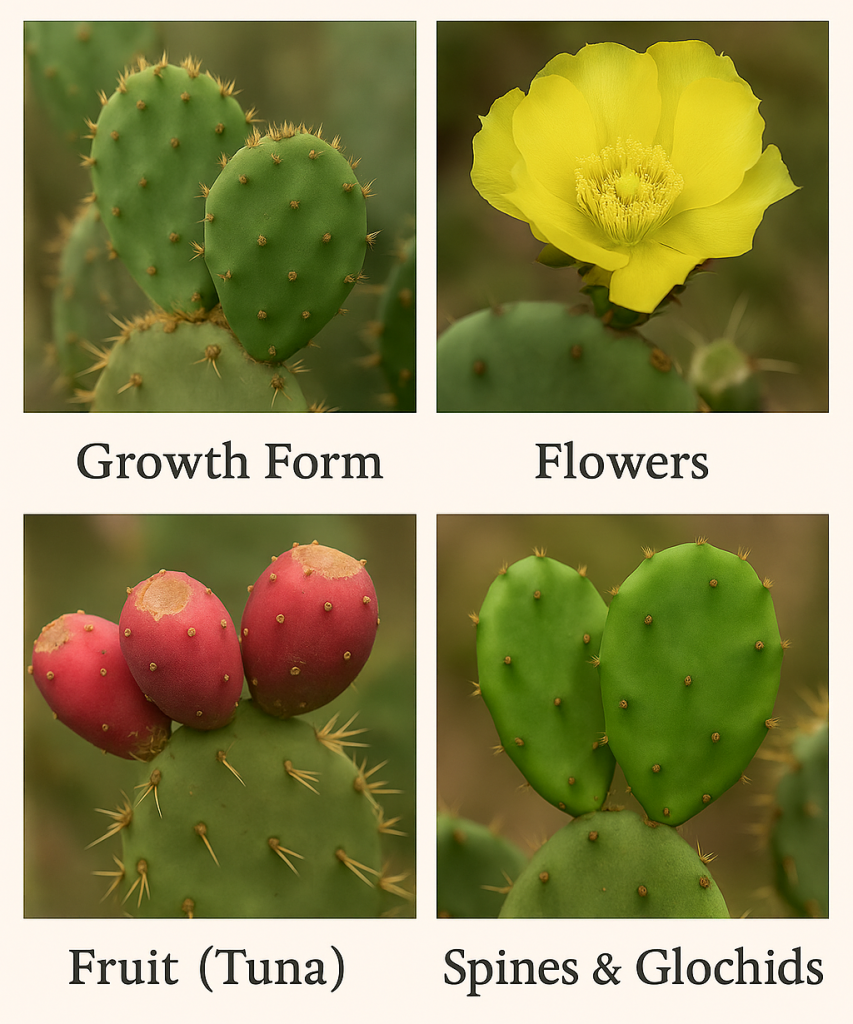
Why Gardeners Love Opuntia
- Extremely drought-tolerant (perfect for hot, dry, or low-maintenance gardens)
- Edible and versatile (both pads and fruits are nutritious and delicious)
- Wildlife-friendly (flowers attract bees, butterflies, and hummingbirds)
- Great for erosion control (roots hold soil in place on hillsides)
- Visually striking (adds drama and texture to rock gardens and borders)
- Low-input and zero-waste (no need for fertilizers, mulch with its own trimmings)
Sustainable Benefits
- Performs CAM photosynthesis to conserve water
- Acts as a living fence in permaculture gardens
- Biodegradable pads can enrich compost or be used as natural water purifiers
- Survives with minimal intervention even in poor soils
How to Grow Opuntia
- Hardiness: USDA Zones 5–11 (depending on species)
- Light: Full sun (6–8+ hours daily)
- Soil: Well-draining sandy or gravelly soil
- Water: Very low — water only when soil is completely dry
- Spacing: 2–3 feet apart to allow for air flow and pad expansion
- Propagation: Easy from pad cuttings; no rooting hormone needed
- Pruning: Use tongs or gloves to trim pads; wear long sleeves to avoid glochids
Culinary & Medicinal Uses
| Plant Part | Use |
| Nopales (pads) | Grilled, stewed, or added to tacos, salads, and stir-fry |
| Tunas (fruit) | Used in jams, syrups, drinks, or eaten fresh (after peeling) |
| Mucilage | Traditional use in water purification or skin-soothing salves |
Handling Tip
Always wear thick gloves or use kitchen tongs when working with Opuntia pads. While some varieties are spineless (e.g., Opuntia ellisiana), most contain irritating glochids — tiny, barbed hairs that are hard to see but cause skin irritation.
Popular Garden Varieties
- Opuntia ficus-indica – Cultivated prickly pear, large pads, edible fruit
- Opuntia humifusa – Cold-hardy groundcover variety
- Opuntia engelmannii – Tree-like form with striking yellow flowers
- Opuntia ellisiana – Nearly spineless, great for family gardens
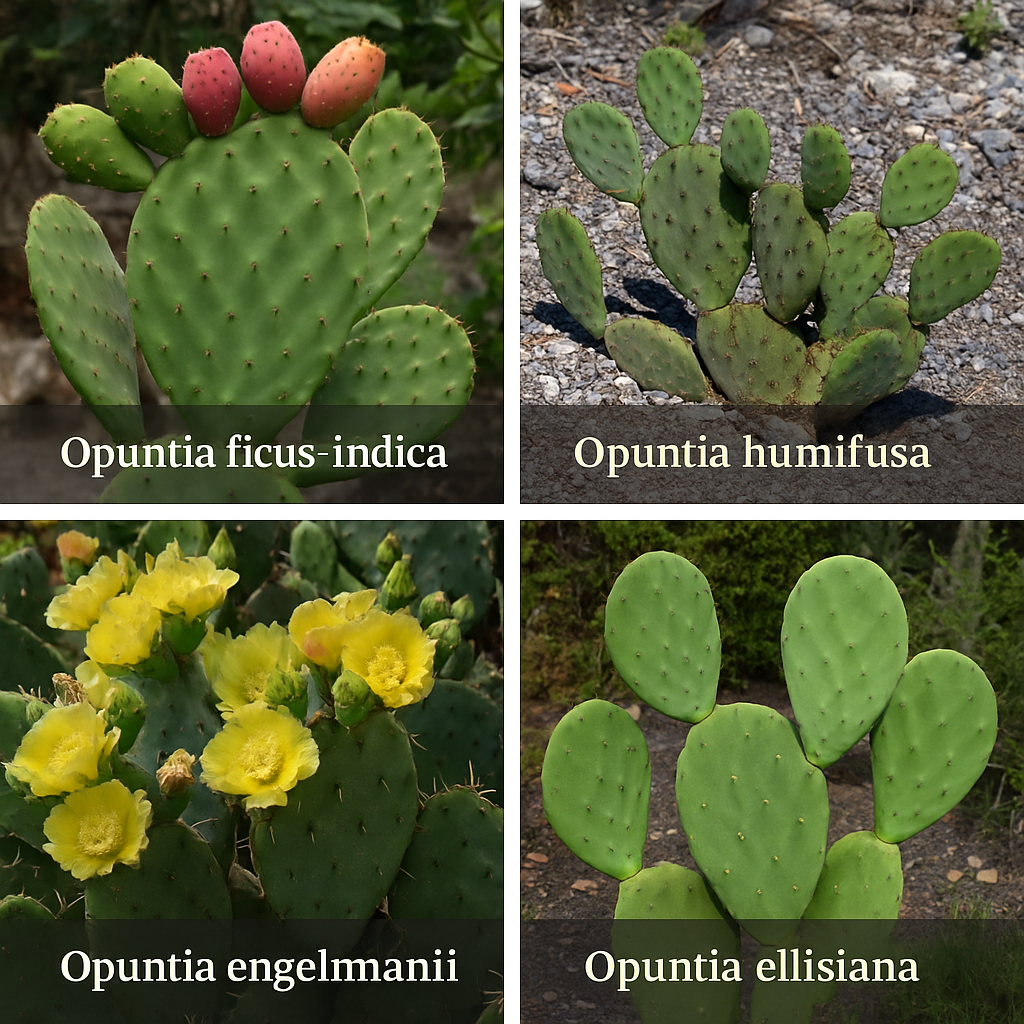
📌 Want to learn more about how to integrate Opuntia into your sustainable landscape?
Explore companion planting, edible garden design, and xeriscaping layouts at Greenmuse.io.

